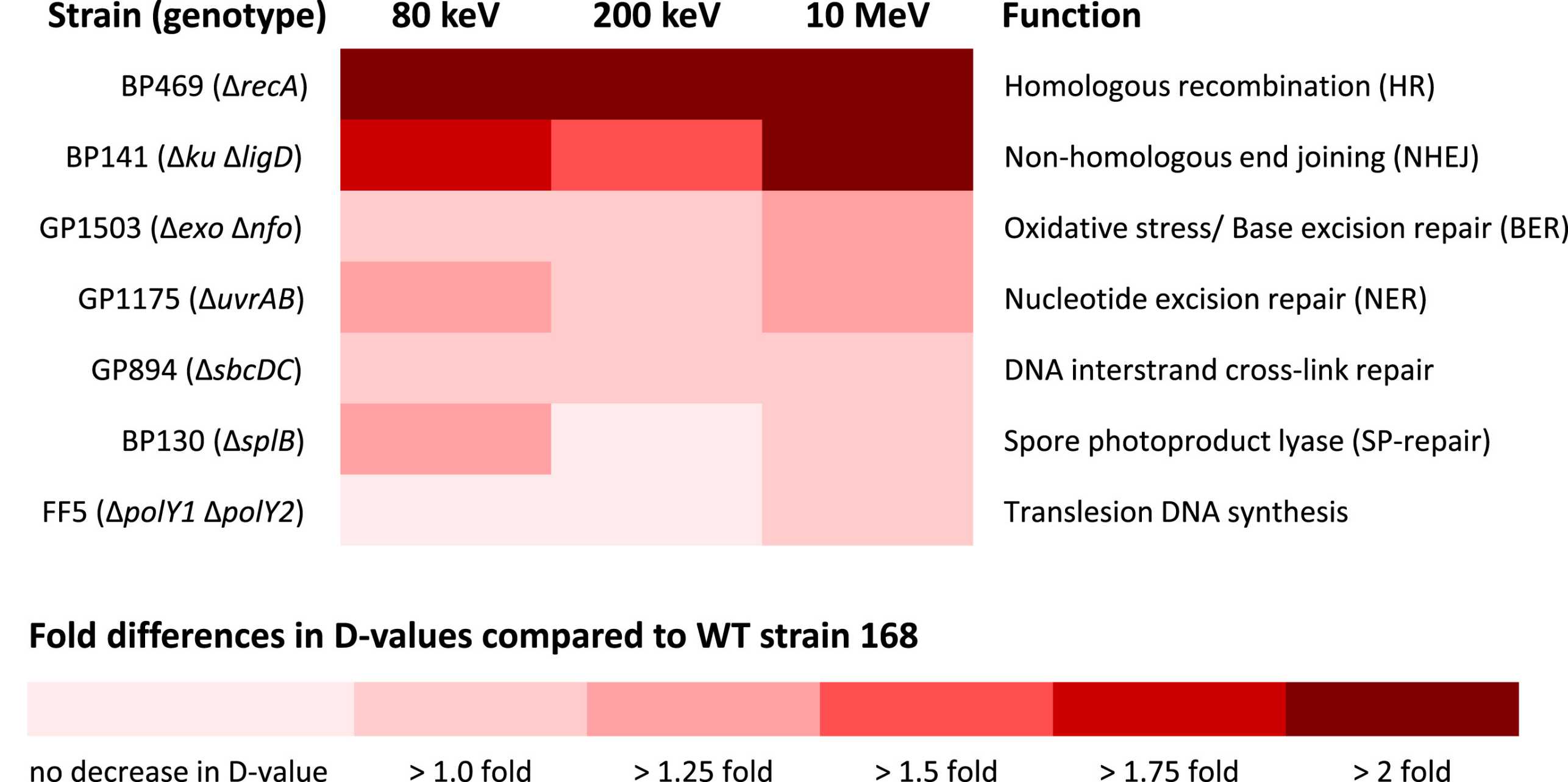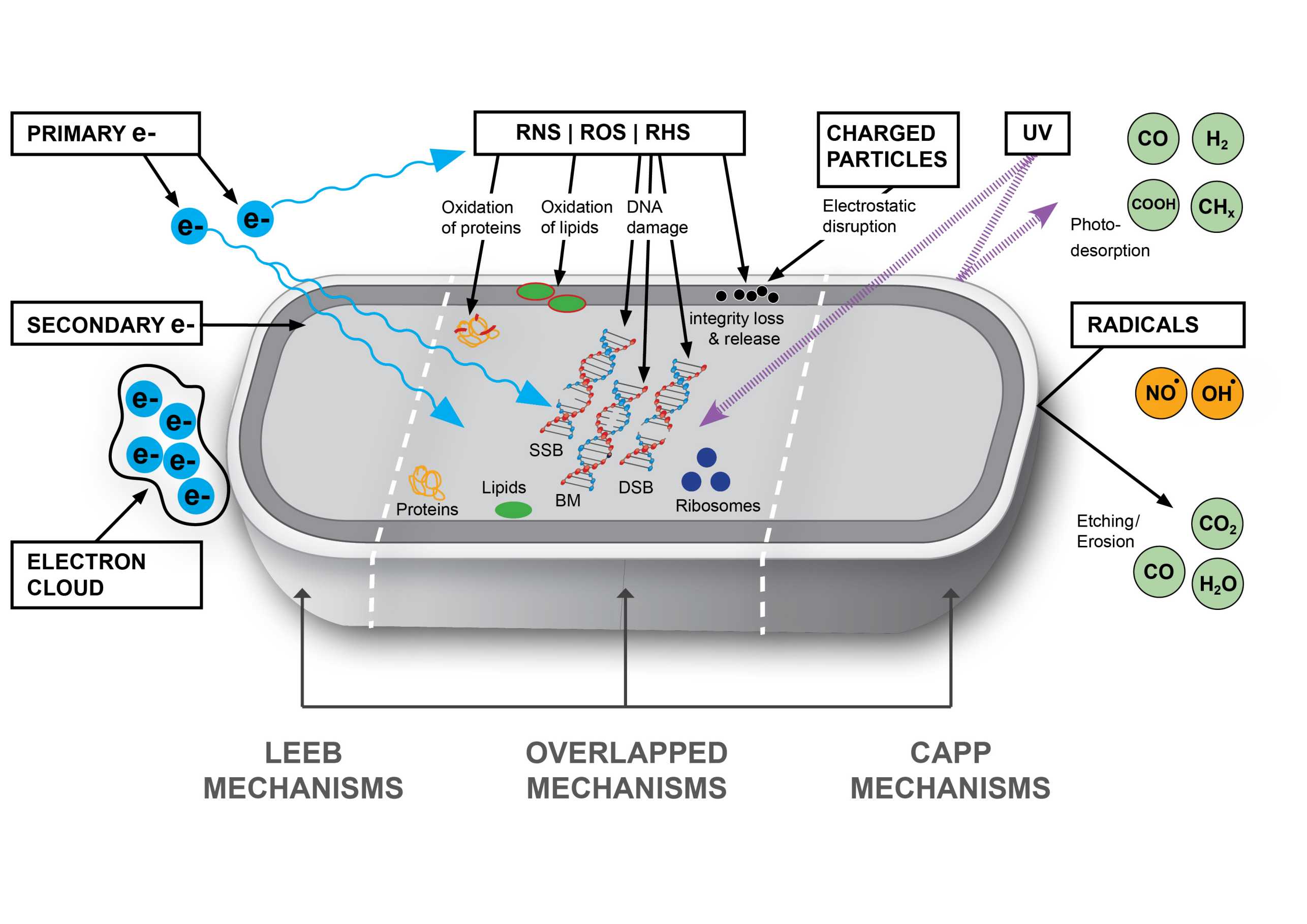Low Energy Electron Beam

Background: Dry food products are often highly contaminated, and dry stress-resistant microorganisms, such as certain types of Salmonella and bacterial spores, can be still viable and multiply if the product is incorporated into high moisture food products or rehydrated. Traditional technologies for the decontamination of these products have certain limitations and drawbacks, such as alterations of product quality, environmental impacts, carcinogenic potential and/or lower consumer acceptance. Cold atmospheric pressure plasma (CAPP) and low energy electron beam (LEEB) are two promising innovative technologies for microbial inactivation on dry food surfaces, which have shown potential to solve these certain limitations. Scope and approach: This review critically summarizes recent studies on the decontamination of dry food surfaces by CAPP and LEEB. Furthermore, proposed inactivation mechanisms, product-process interactions, current limitations and upscaling potential, as well as future trends and research needs for both emerging technologies, are discussed. Key findings and conclusions: CAPP and LEEB are nonthermal technologies with a high potential for the gentle decontamination of dry food surfaces. Both technologies have similarities in their inactivation mechanisms. Due to the limited penetration depth of both technologies, product-process interactions can be minimized by maintaining product quality. A first demonstrator with Technology Readiness Level (TRL) 7 for LEEB has already been introduced into the food industry for the decontamination of herbs and spices. Compared with LEEB, CAPP is at the advanced development stage with TRL 5, for which further work is essential to design systems that are scalable to industrial requirements.
In the 2nd figure, fold differences in D-values of investigated Bacillus subtilis mutants compared to wild type strain 168 under electron beam treatments at different energy levels are shown. Color code indicates the fold of differences in D-values compared to the wild type, e.g., BP469 had a D-value that is > 2-fold smaller than the wild type, indicating that BP469 is > 2-fold more sensitive compared to wild type 168.
Selected publication
Hertwig C., Meneses N. & Mathys A. 2018. Cold atmospheric pressure plasma and low energy electron beam as alternative nonthermal decontamination technologies for dry food surfaces: A review. Trends in Food Science & Technology 77, 131-142. external page DOI
Zhang Y., Huber N., Moeller R., Stülke J., Dubovcova B., Akepsimaidis G., Meneses N., Drissner D. and Mathys A. (2020). Role of DNA repair in Bacillus subtilis spore resistance to high energy and low energy electron beam treatments. Food Microbiology 87: 103353. external page DOI
Zhang Y., Moeller R., Tran S., Dubovcova B., Akepsimaidis G., Meneses N., Drissner D. and Mathys A. 2018. Geobacillus and Bacillus spore inactivation by low energy electron beam technology: Resistance and influencing factors. Frontiers in Microbiology, 9:2720. external page DOI
